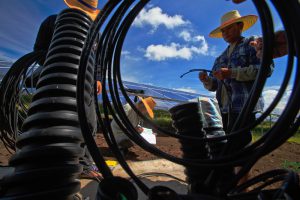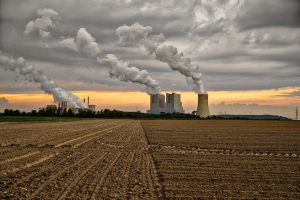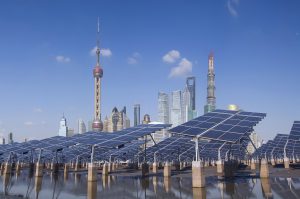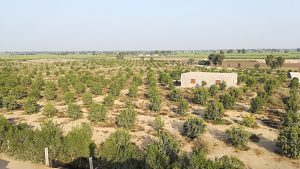Can China be a global leader on the circular economy, as it has purported to become on climate change? It’s a question posed by a new report from UK thinktank Chatham House, which highlights the opportunities for the circular economy as an engine of sustainable and resilient growth in developing countries.
The circular economy is an economic model based on recycling, reusing and repairing raw materials and products that was first proposed in Japan. In China it has been a domestic political priority, widely adopted in industrial policy and written into law in 2008.
“China has long understood that the circular economy can be a win-win for sustainable growth – meeting consumer demand, creating jobs and protecting the environment,” said Laura Wellesley, research fellow at Chatham House and a report co-author, referring to the country’s domestic circular economy initiatives.
“But opportunities for scaling up this approach in developing countries are being missed,” she added. “Through projects like the Belt and Road Initiative (BRI), China has huge potential to foster greater coordination regionally and internationally, and lock in sustainable growth before a critical window of opportunity passes.”
However, China could also achieve the opposite result if its growing overseas investments follow the traditional “pollute first, clean up later” model, which could steer BRI countries into carbon- and resource-intensive development pathways.
Greater scrutiny of the environmental and climate impacts of BRI projects is happening amid increasing industry commitments in rich countries on the shift to sustainable consumption and production models. In one of the most ambitious climate commitments from a vehicle manufacturer, Daimler recently announced its entire passenger car portfolio will be carbon neutral by 2039. Similarly, one of the world’s largest building materials companies, HeidelbergCement, pledged in Germany to go carbon neutral by 2050.
As Chinese overseas investment continues to flow into traditional, energy-intensive industries, such as cement, calls for China to green its spending will only grow louder.
Building out the circular economy
The Chatham House report cites a number of existing, positive examples in this regard. Large informal sectors in poor countries already practise “circular” activities, the report points out, in areas like e-waste and phone repairs.
Recognising and drawing on this expertise as the seed of an alternative industrial development and job-creation strategy could reap dividends, including for climate change mitigation and adaptation.
Potential circular economy approaches can be found beyond the waste sector, from housing to mobility and food. In Vietnam, for example, materials made from rice husks are being used to build more fire-resistant, heat- and sound-insulated homes. In India, burying shredded plastic in road construction is being trialled as an alternative to landfill that can help increase road durability.
But a range of challenges still exist, from institutional capacity and weak regulation, to access to finance and technology.
Rwanda and Kenya, for example, have imposed total bans on plastic bags, but they’re still smuggled into the country. In the absence of cheap and high-quality alternatives, retailers are left with little choice but to continue adding to the waste crisis.
Refurbished phones promise welfare benefits in poor countries, increasing connectivity and economic opportunities while conserving resources, but today’s informal e-waste industry can bring significant negative health impacts for the often vulnerable populations they employ.
China’s supporting role
How could China help poor countries to move past such challenges and unlock the potential of the circular economy? President Xi Jinping has pledged that the BRI should promote a “green, low-carbon, circular and sustainable form of development”.
Examples of China building on its own experience in new business models include investments in plastic recycling sectors in African countries. About 60 Chinese factories are engaged in plastic recycling in Tanzania, 20 Chinese plastic recycling firms operate in Ghana, and three more are registered in Ethiopia.
The report also cites the planned construction of a China-African Circular Economy Industrial Park in South Africa, led by GEM Co. Ltd, a Shenzhen-based company specialising in resource recycling, as well as a Chinese government-funded project to assess the potential of industrial parks and zones in Azerbaijan, Tajikistan, Turkmenistan and Uzbekistan, as part of the BRI.
However, for developing countries to go further they will require greater support from multilateral institutions, such as development banks, and international businesses. Here, not only emerging regional formats like the BRI, but also China’s large policy banks can surely play a greater role, as can its large and state-owned enterprises, which have increasing experience in models like industrial symbiosis and the sharing economy.
Specifically, the report points to the potential of EU-China cooperation, drawing on a recent agreement between the two, which could lead to joint sharing of best practices with developing countries, to realise the potential of a system shift getting underway in China and Europe – but urgently needed around the world.









